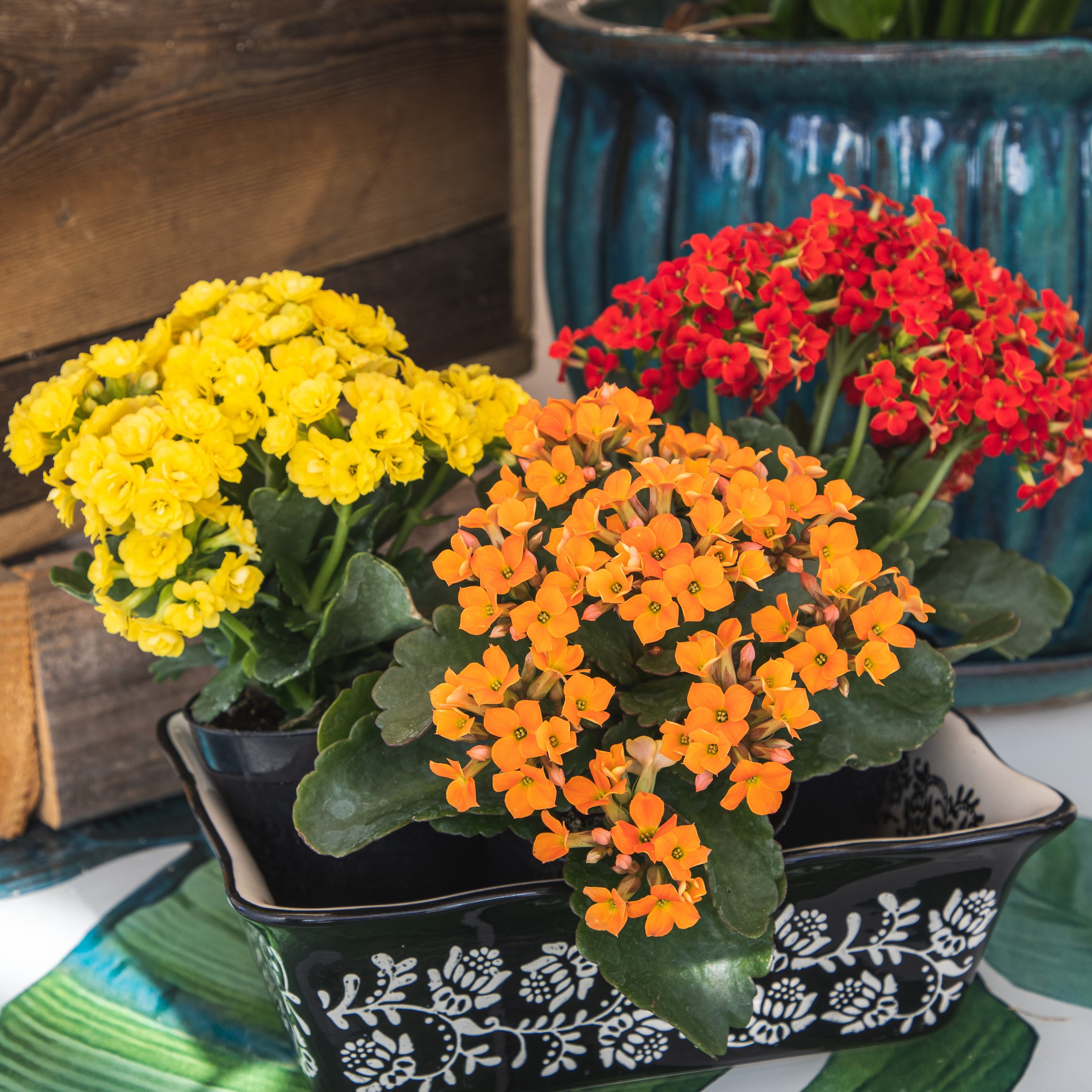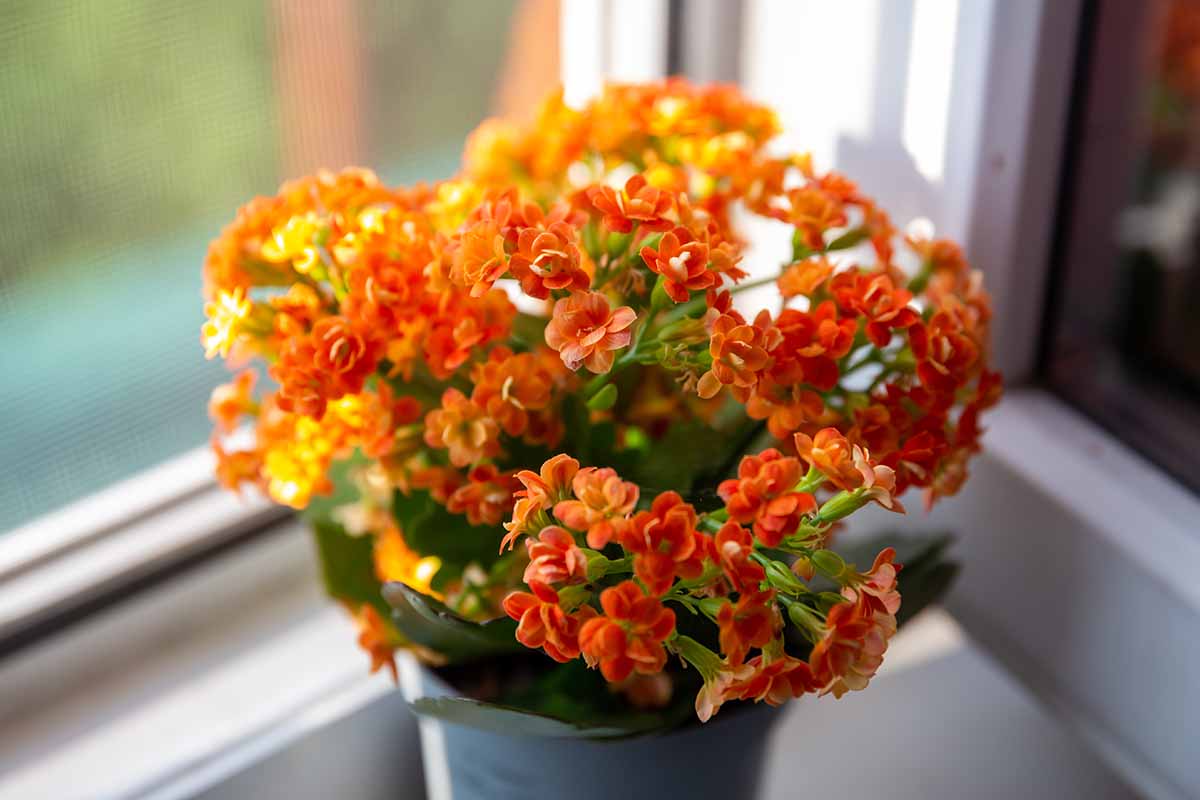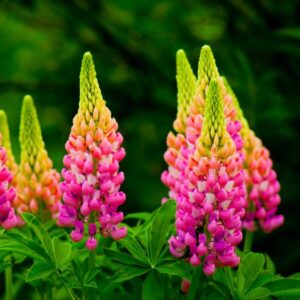Kalanchoe plants are a popular choice among indoor and outdoor gardeners alike. With their vibrant colors, low maintenance needs, and unique appearance, it’s no wonder why these plants have gained such popularity. But beyond their aesthetic appeal, kalanchoe plants also hold a deeper meaning that many may not be aware of. In this article with Impeccable Nest, we will delve into the world of kalanchoe plants and uncover the true meaning behind this beloved plant.

What is a Kalanchoe Plant?
Before we dive into the meaning of kalanchoe plants, let’s first understand what they are. Kalanchoe plants are a genus of flowering succulents that belong to the Crassulaceae family. They are native to Madagascar and can also be found in other parts of Africa, Asia, and Europe. These plants are known for their thick, fleshy leaves and bright, showy flowers that come in a variety of colors such as red, pink, yellow, and white.
Kalanchoe Plant Meaning: Symbolic
Beyond its physical properties, the Kalanchoe carries rich symbolic meaning in cultures across the world:
Perseverance Through Adversity
The Kalanchoe plant, also known as the “life plant” or “miracle leaf,” is a popular succulent that is native to Madagascar and other parts of Africa. It belongs to the Crassulaceae family and is closely related to other succulents such as jade plants and aloe vera.
One of the most fascinating aspects of the Kalanchoe plant is its ability to thrive in tough conditions. This is due to its thick, fleshy leaves which are able to store water and help the plant survive through periods of drought. In fact, the name “Kalanchoe” is derived from the Chinese words “Kalan Chauhuy,” which means “that which falls and grows.” This refers to the plant’s ability to grow new leaves even after they have fallen off, symbolizing resilience and perseverance.
The thick leaves of the Kalanchoe plant also serve as protection against predators and harsh weather conditions. They are covered in a waxy layer that helps to prevent water loss and protect the plant from intense sunlight. This adaptation allows the Kalanchoe to survive in arid environments where other plants would struggle to grow.
Another remarkable characteristic of the Kalanchoe plant is its ability to regrow from a broken stem. Even if the plant is damaged or cut, it has the ability to produce new roots and continue growing. This symbolizes the power of renewal and new beginnings, even after experiencing trauma or setbacks.
In many cultures, the Kalanchoe plant is seen as a symbol of strength and endurance. Its ability to withstand tough conditions and bounce back from adversity is seen as a source of inspiration and hope. In some traditions, the plant is believed to bring good luck and prosperity to those who keep it in their homes.
Aside from its symbolic meanings, the Kalanchoe plant also has practical uses. Its leaves contain medicinal properties and have been used in traditional medicine to treat various ailments such as inflammation, infections, and respiratory issues. The plant is also known for its air-purifying abilities, making it a popular choice for indoor plants.
The Kalanchoe plant holds great significance and meaning due to its remarkable ability to thrive under tough conditions. Its resilience, perseverance, and power of renewal make it a powerful symbol of strength and hope. Whether used for decorative purposes or for its medicinal properties, the Kalanchoe plant serves as a reminder that even in the face of adversity, there is always the potential for growth and new beginnings.
Celebration and Joy
The Kalanchoe plant, also known as the “Flaming Katy” or “Christmas kalanchoe,” is a popular succulent that is native to Madagascar. It has become a favorite among gardeners and plant enthusiasts due to its vibrant and long-lasting blooms. In addition to its aesthetic appeal, the Kalanchoe plant also holds significant cultural and symbolic meanings in various traditions.
One of the most prominent meanings associated with the Kalanchoe plant is joy and celebration. This symbolism can be traced back to Indian culture, where the plant is often given as a gift to convey positive wishes and blessings. In India, the Kalanchoe plant is commonly referred to as “Pichhodiya” or “Patharchatta,” which translates to “stone flower.” This name is derived from the plant’s ability to thrive in harsh conditions and its resilience, which is seen as a symbol of strength and perseverance.
In Feng Shui, the Kalanchoe plant is believed to bring good luck and prosperity to the home. Its bright and cheerful flowers are said to attract positive energy and promote happiness and harmony within the household. According to this ancient Chinese practice, placing the Kalanchoe plant in the southeast corner of the home can enhance wealth and abundance, while placing it in the east can bring good health and vitality.
The colors of the Kalanchoe flowers also hold significance in different cultures and traditions. The bright yellow blooms are associated with the sun and are believed to bring warmth, positivity, and success. Orange flowers symbolize enthusiasm, creativity, and passion, making them a perfect gift for someone starting a new venture or pursuing their dreams. Red flowers, on the other hand, represent love, romance, and passion, making them a popular choice for Valentine’s Day or anniversaries. Pink flowers symbolize gratitude, appreciation, and friendship, making them a thoughtful gift for a loved one or friend.
In addition to its cultural and symbolic meanings, the Kalanchoe plant also holds medicinal properties in traditional medicine. In Ayurveda, the plant is used to treat various ailments such as coughs, colds, and skin diseases. Its leaves are believed to have anti-inflammatory and antimicrobial properties, making them useful in treating wounds and infections.
The Kalanchoe plant is not only a beautiful addition to any home or garden, but it also holds significant cultural and symbolic meanings. Its vibrant colors and resilience make it a symbol of joy, celebration, and positivity in Indian and Feng Shui traditions. Whether given as a gift or kept for its aesthetic appeal, the Kalanchoe plant is a meaningful and cherished plant that brings happiness and prosperity to its surroundings.

Prosperity and Abundance
The Kalanchoe plant, also known as the “money tree” or “fortune plant”, is a popular houseplant that has been used in Feng Shui practices for centuries. In Chinese culture, plants are believed to have strong energy and can bring good luck and prosperity to those who possess them. The Kalanchoe plant, with its vibrant and resilient nature, is considered to be one of the most auspicious plants in Feng Shui.
One of the main reasons why the Kalanchoe plant is associated with good fortune and prosperity is its ability to regrow from broken stems and leaves. This characteristic symbolizes resilience, strength, and the ability to bounce back from setbacks. In Feng Shui, this quality is highly valued and is believed to attract financial opportunities and success. By having a Kalanchoe plant in your home or workplace, you are inviting positive energy and abundance into your life.
Another reason why the Kalanchoe plant is considered lucky is its resemblance to a money tree. Its thick, fleshy leaves and round, coin-like flowers are reminiscent of coins and wealth. According to Feng Shui principles, placing the plant in the southeast corner of your home or office is believed to enhance its money-drawing abilities. This is because the southeast corner is associated with wealth and abundance in Feng Shui.
In addition to its association with financial luck, the Kalanchoe plant is also believed to bring windfall or unexpected gains. This could be in the form of a sudden promotion, a new business opportunity, or even winning the lottery. Its presence in your space is thought to attract positive energy and opportunities that will lead to increased wealth and prosperity.
Aside from its symbolic meanings, the Kalanchoe plant is also a low-maintenance and easy-to-grow plant, making it a popular choice for those who want to incorporate Feng Shui principles into their homes or workplaces. Its ability to thrive in various conditions and its long-lasting blooms make it a perfect addition to any space.
The Kalanchoe plant holds significant meaning in Feng Shui traditions. Its resilience, resemblance to a money tree, and association with windfall all contribute to its reputation as a lucky plant that can attract wealth and prosperity. By strategically placing this plant in your home or workplace, you are inviting positive energy and abundance into your life. So why not add a Kalanchoe plant to your space and see how it can bring good luck and fortune into your life?
Resilience and Endurance
The kalanchoe plant is a popular houseplant that has gained widespread recognition for its beautiful, vibrant flowers and low maintenance care. However, beyond its aesthetic appeal, this plant holds a deeper meaning that has been passed down through generations.
One of the most prominent symbols associated with the kalanchoe plant is resilience and endurance. This plant is known for its ability to thrive in harsh conditions, making it a symbol of strength and perseverance. The kalanchoe plant is native to arid regions such as Madagascar and Africa, where it has adapted to survive in dry and hot climates. Despite these challenging conditions, the kalanchoe plant continues to flourish and bloom, showcasing its remarkable resilience.
This quality of resilience is reflected in the plant’s thick, waxy leaves. These leaves are designed to store water, allowing the plant to survive long periods of drought. They also have a protective layer of wax on their surface, which helps to prevent moisture loss. This adaptation not only enables the kalanchoe plant to survive in its natural habitat but also makes it an excellent choice for indoor plants, as it can withstand neglect and infrequent watering.
In addition to resilience, the kalanchoe plant is also a symbol of endurance. This plant has a long lifespan, with some species living up to 20 years. It can also produce new shoots and flowers even after being neglected or damaged, demonstrating its ability to endure and bounce back from adversity. This quality has made the kalanchoe plant a popular gift for loved ones going through tough times, as it serves as a reminder to stay strong and persevere through challenges.
Furthermore, the kalanchoe plant is also associated with positivity and good fortune. In some cultures, it is believed that having a kalanchoe plant in your home brings luck and prosperity. Its bright and cheerful flowers are said to attract positive energy and ward off negative vibes, making it a popular choice for home décor.
The kalanchoe plant holds a deep and powerful meaning that goes beyond its physical appearance. Its ability to thrive in harsh conditions, resilience, and endurance make it a symbol of strength and perseverance. This plant serves as a reminder to stay strong and resilient in the face of challenges and to always have hope for a brighter future.

Love and Affection
The kalanchoe plant, also known as the “love plant,” has been a symbol of love and affection in many cultures for centuries. This beautiful succulent is native to Madagascar and is a member of the Crassulaceae family. Its name comes from the Chinese words “Kalan Chauhuy,” which means “that which falls and grows.”
One of the main reasons why the kalanchoe plant is associated with love is because of its heart-shaped leaves. These leaves are not only aesthetically pleasing but also hold a deeper meaning. In many cultures, the heart shape is seen as a symbol of love, making the kalanchoe plant a perfect representation of this emotion.
Furthermore, the bright and vibrant flowers of the kalanchoe plant add to its symbolism of love. The most common color of these flowers is red, which is often associated with passion and romance. However, they can also come in shades of pink, white, and yellow, each carrying its own significance. Pink represents admiration and gratitude, white symbolizes purity and innocence, and yellow signifies friendship and joy. All of these emotions are closely linked to love, making the kalanchoe plant a versatile gift for expressing different types of love.
In some cultures, the kalanchoe plant is also believed to bring luck and prosperity to relationships. It is said that keeping this plant in the house or gifting it to someone will bring harmony and happiness to their love life. This belief may stem from the fact that the kalanchoe plant is easy to care for and can thrive in various environments, symbolizing the resilience and strength of a loving relationship.
The kalanchoe plant’s association with love is not limited to romantic relationships. In some cultures, it is also seen as a symbol of maternal love and protection. The plant’s ability to propagate easily by producing new baby plants, known as “pups,” is seen as a representation of a mother’s love and nurturing nature.
In addition to its symbolism of love, the kalanchoe plant also has medicinal properties that have been used in traditional medicine for centuries. It is believed to have healing properties and can be used to treat various ailments, including skin conditions, respiratory issues, and digestive problems. This adds to the plant’s overall significance and makes it a popular gift not just for romantic occasions but also for wishing someone good health and well-being.
The kalanchoe plant holds a special meaning in many cultures, representing love, passion, luck, and resilience. Its heart-shaped leaves and bright flowers make it a beautiful and meaningful gift for expressing love and affection towards loved ones. Whether given as a token of romantic love or a symbol of maternal care, the kalanchoe plant is a perfect way to convey heartfelt emotions and bring joy to those who receive it.
Kalanchoe Plant Meaning in Different Cultures
In addition to its cultural significance, kalanchoe plant meaning can also vary across different cultures. Here are some examples:
In Japan
In Japan, kalanchoe plants hold a special significance and are often associated with love and affection. These beautiful plants are commonly given as gifts to express romantic feelings towards someone.
The kalanchoe plant, also known as “katakana” in Japanese, is a popular houseplant that is native to Madagascar. It is characterized by its vibrant and colorful flowers, which can range from shades of pink, red, yellow, and white. These flowers bloom in clusters and have a delicate appearance, making them a popular choice for decorative purposes.
One of the main reasons why kalanchoe plants are associated with love and affection in Japan is because of their symbolism. In Japanese culture, flowers hold great significance and are often used to convey different emotions and messages. The kalanchoe plant, with its bright and cheerful blooms, is believed to represent happiness, joy, and love. This makes it a perfect gift to express one’s feelings towards a loved one.
Moreover, the kalanchoe plant is also believed to bring good luck and prosperity to the recipient. In Japan, it is a common tradition to give gifts that symbolize good fortune and blessings. The kalanchoe plant, with its vibrant colors and positive energy, is considered to be a lucky charm that can bring happiness and success to the person receiving it.
Another reason why kalanchoe plants are associated with love in Japan is because of their long-lasting nature. These plants have a relatively long blooming period, with some varieties blooming for up to six months. This longevity is seen as a reflection of the strong and enduring nature of love. By giving someone a kalanchoe plant, it is believed that you are expressing your love and commitment to them for a long time.
Furthermore, kalanchoe plants are also known for their easy maintenance and resilience. They require minimal care and can thrive in various conditions, making them a perfect gift for someone who may not have a green thumb. This quality is seen as a representation of the simplicity and sincerity of love. By giving a kalanchoe plant, you are showing that your love is pure and uncomplicated.
In addition to being given as gifts, kalanchoe plants are also used in traditional Japanese weddings. They are often incorporated into the wedding decorations and bouquets as a symbol of love and happiness for the newlyweds.
Kalanchoe plants hold a special place in Japanese culture and are closely associated with love and affection. Their vibrant colors, longevity, and symbolism make them a popular choice for expressing romantic feelings towards someone. So, the next time you want to show your love and appreciation to someone in Japan, consider giving them a beautiful kalanchoe plant as a token of your affection.

In South Africa
In South Africa, kalanchoe plants have been used for centuries in traditional medicine to treat a variety of ailments. These plants, also known as “miracle leaf” or “life plant”, are native to Madagascar but have been introduced and widely cultivated in many parts of the world, including South Africa.
The use of kalanchoe plants in traditional medicine is deeply rooted in the cultural and spiritual beliefs of the indigenous people of South Africa. They believe that these plants possess healing properties and can cure various illnesses and diseases. The medicinal properties of kalanchoe plants have been passed down through generations, with knowledge and practices being shared within families and communities.
One of the most common uses of kalanchoe plants in traditional medicine is for treating headaches. The leaves of the plant are crushed and applied topically to the forehead to alleviate pain and discomfort. This method is believed to work by reducing inflammation and promoting blood flow to the affected area.
Kalanchoe plants are also used to treat stomach pains and digestive issues. The leaves of the plant are boiled in water to make a tea, which is then consumed to relieve stomach cramps, bloating, and other gastrointestinal problems. The plant is believed to have anti-inflammatory and antispasmodic properties, making it an effective remedy for digestive issues.
In addition to these common uses, kalanchoe plants are also used to treat a range of other ailments, including skin conditions, respiratory problems, and even cancer. The leaves of the plant are often crushed and applied topically to the skin to treat wounds, burns, and insect bites. The sap of the plant is also used to soothe sore throats and coughs when ingested.
While there is limited scientific evidence to support the effectiveness of kalanchoe plants in treating these ailments, many people in South Africa continue to use them as a natural alternative to modern medicine. The plants are easily accessible and affordable, making them a popular choice for those who cannot afford or do not have access to conventional medical treatments.
However, it is important to note that the use of kalanchoe plants in traditional medicine should not replace proper medical care. It is always recommended to consult with a healthcare professional before using any herbal remedies, especially if you have a pre-existing medical condition or are taking medication.
Kalanchoe plants have a long history of use in traditional medicine in South Africa. They are believed to possess healing properties and are used to treat various ailments, including headaches and stomach pains. While more research is needed to fully understand the medicinal benefits of these plants, they continue to be an important part of the cultural and spiritual traditions of the people of South Africa.
In Europe
In Europe, kalanchoe plants hold a special significance and are often seen as symbols of hope and resilience. These beautiful plants, with their vibrant colors and unique shapes, have become popular gifts for those going through difficult times.
The kalanchoe plant is native to Madagascar and has been cultivated in Europe since the 19th century. It is a succulent plant, meaning it stores water in its leaves, making it drought-resistant and easy to care for. This resilience and ability to thrive in harsh conditions is one of the reasons why kalanchoe plants have come to symbolize hope and strength.
In many European countries, kalanchoe plants are given as gifts to friends and loved ones who may be facing challenges or going through a tough time. The bright and cheerful flowers of the kalanchoe are believed to bring positive energy and uplift the spirits of those who receive them.
Moreover, kalanchoe plants are also associated with new beginnings and growth. In some European cultures, they are given as housewarming gifts or to celebrate the birth of a child. This is because the kalanchoe plant is known to produce new shoots and flowers even in adverse conditions, symbolizing the idea of starting fresh and overcoming obstacles.
In addition to their symbolic meanings, kalanchoe plants are also highly valued for their medicinal properties. They are believed to have healing properties and are used in traditional medicine to treat various ailments such as headaches, inflammation, and respiratory issues. This adds to the plant’s reputation as a symbol of hope and resilience, as it is seen as a source of healing and strength.
The kalanchoe plant holds a special place in European culture and is deeply ingrained in the traditions and beliefs of many countries. Its ability to thrive in difficult conditions, its vibrant and uplifting appearance, and its medicinal properties make it a powerful symbol of hope and resilience. Whether given as a gift or kept as a houseplant, the kalanchoe serves as a reminder to stay strong and persevere through tough times.
Conclusion
In conclusion, kalanchoe plants hold significant meaning and symbolism in different cultures and traditions. Whether you’re looking to add a touch of color to your home, express your love and affection, or wish someone prosperity, a kalanchoe plant is a perfect choice. With their resilience, beauty, and unique symbolism, these plants are a wonderful addition to any collection. So go ahead and bring home a kalanchoe plant today and experience its meaning for yourself.

We’re Emma Carole Paradis and Kimberly Carole, the owners and designers of Impeccable Nest, based in Bedford, New Hampshire. A mother-daughter team with a love of design. Originally from Manhattan Beach, California, now based in Bedford, New Hampshire, we bring a Southern California cool and New England tradition to our design. Not only do we work together…we also live together in a multi-generational home…and a home that they are known to design for others.


